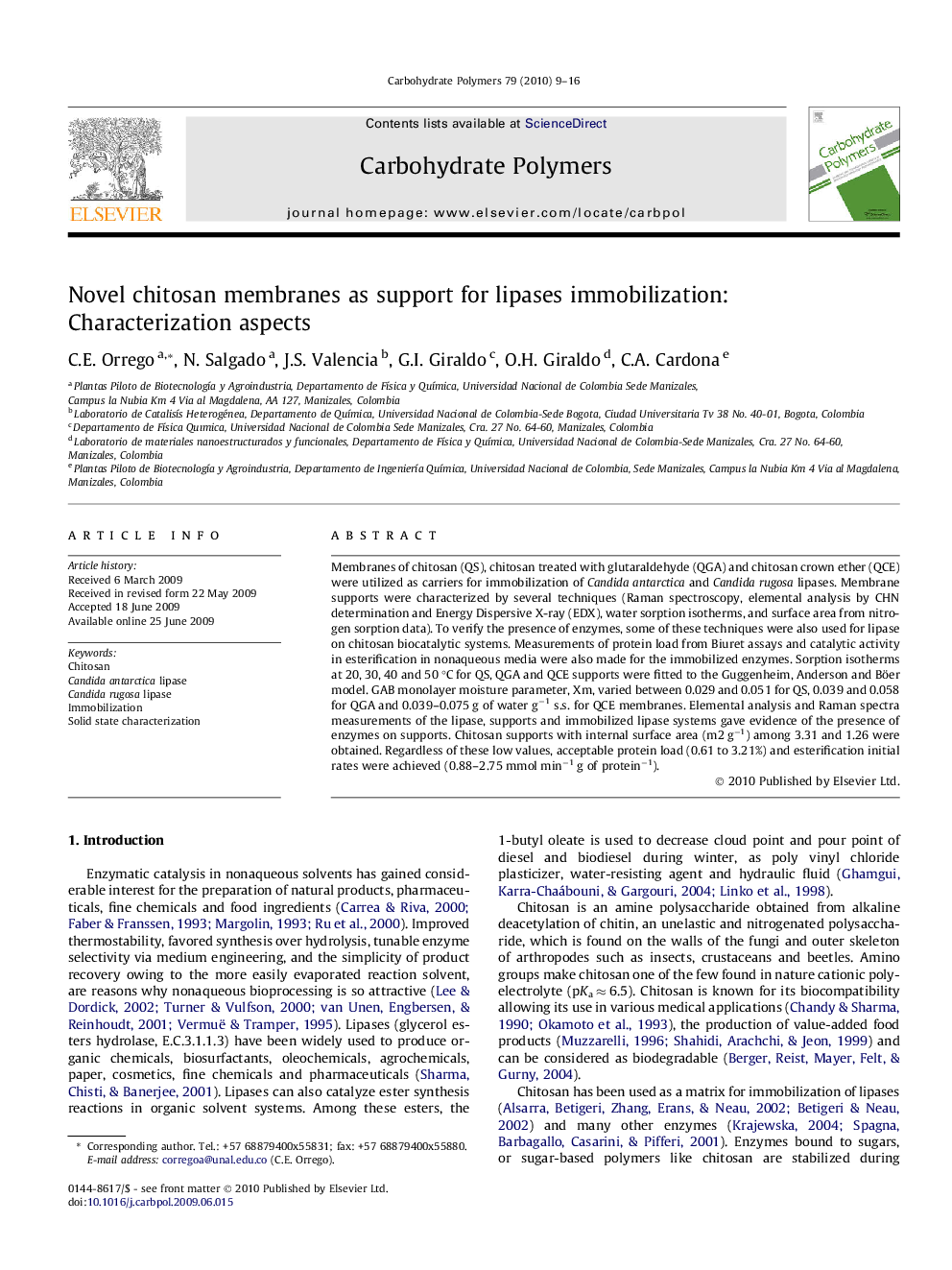| کد مقاله | کد نشریه | سال انتشار | مقاله انگلیسی | نسخه تمام متن |
|---|---|---|---|---|
| 1387325 | 982570 | 2010 | 8 صفحه PDF | دانلود رایگان |

Membranes of chitosan (QS), chitosan treated with glutaraldehyde (QGA) and chitosan crown ether (QCE) were utilized as carriers for immobilization of Candida antarctica and Candida rugosa lipases. Membrane supports were characterized by several techniques (Raman spectroscopy, elemental analysis by CHN determination and Energy Dispersive X-ray (EDX), water sorption isotherms, and surface area from nitrogen sorption data). To verify the presence of enzymes, some of these techniques were also used for lipase on chitosan biocatalytic systems. Measurements of protein load from Biuret assays and catalytic activity in esterification in nonaqueous media were also made for the immobilized enzymes. Sorption isotherms at 20, 30, 40 and 50 °C for QS, QGA and QCE supports were fitted to the Guggenheim, Anderson and Böer model. GAB monolayer moisture parameter, Xm, varied between 0.029 and 0.051 for QS, 0.039 and 0.058 for QGA and 0.039–0.075 g of water g−1 s.s. for QCE membranes. Elemental analysis and Raman spectra measurements of the lipase, supports and immobilized lipase systems gave evidence of the presence of enzymes on supports. Chitosan supports with internal surface area (m2 g−1) among 3.31 and 1.26 were obtained. Regardless of these low values, acceptable protein load (0.61 to 3.21%) and esterification initial rates were achieved (0.88–2.75 mmol min−1 g of protein−1).
Journal: Carbohydrate Polymers - Volume 79, Issue 1, 5 January 2010, Pages 9–16